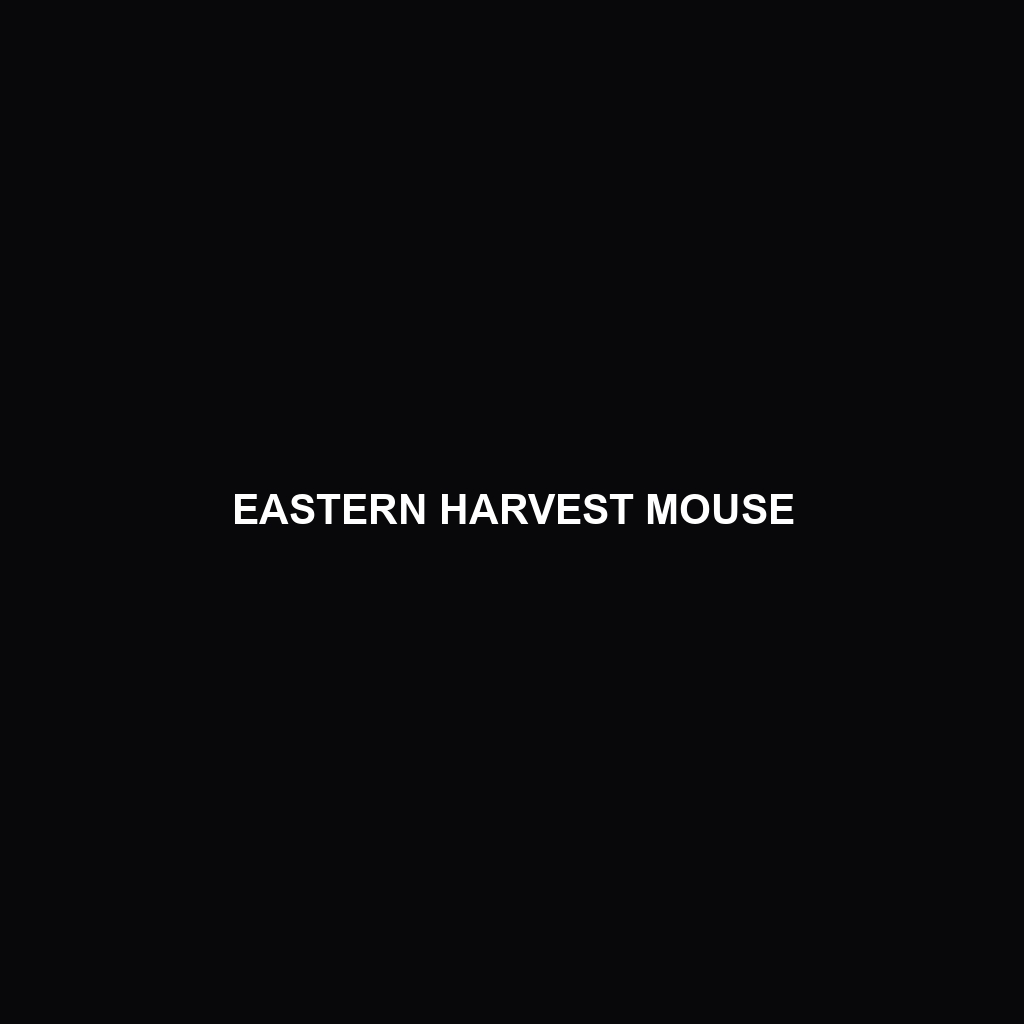Eastern Harvest Mouse: A Comprehensive Species Description
Common Name: Eastern Harvest Mouse
Scientific Name: Reithrodontomys humulis
Habitat
Eastern Harvest Mice are primarily found in the eastern and central United States, particularly in regions such as the Great Plains and the Midwest. These small mammals prefer grassy areas, including prairies, meadows, and agricultural fields. They thrive in habitats with abundant cover such as dense grasses and weeds, which provide protection from predators.
Physical Characteristics
The Eastern Harvest Mouse is a small rodent, measuring approximately 7 to 10 inches in total length, including its tail. They typically weigh between 15 to 30 grams. This species is distinguished by its soft, light brown fur, which may exhibit a grayish tint on the underside. Their large, round ears and long, sparsely furred tail aid in their identification. The mouse’s small, almond-shaped eyes are adapted for nocturnal activity, offering excellent night vision.
Behavior
Eastern Harvest Mice are primarily nocturnal and are known for their agility and quick movements. They typically nest in dense vegetation, constructing small, hidden shelters to evade predators. These mice are social animals, often foraging in groups. Their active behaviors, such as climbing and burrowing, make them a fascinating subject for wildlife enthusiasts and researchers alike.
Diet
The diet of the Eastern Harvest Mouse predominantly consists of seeds, grains, and some insects. They are particularly known for their preference for grasses and weeds, often gathering and storing food in their nests to prepare for winter months. This tendency to hoard food makes them an essential part of the ecosystem, helping to disperse seeds and support plant growth.
Reproduction
Eastern Harvest Mice generally breed from late spring through late summer, producing multiple litters per year. Each litter can contain 2 to 7 offspring, typically weaned at around three weeks of age. The young mice rapidly mature, often reaching reproductive age within a few months, contributing to the sustaining population of the species.
Conservation Status
Currently, the Eastern Harvest Mouse is categorized as Least Concern by the IUCN, indicating a stable population. However, habitat destruction and agricultural practices pose potential threats. Conservation efforts are crucial in safeguarding their natural habitats to maintain their population levels.
Interesting Facts
One fascinating aspect of the Eastern Harvest Mouse is its ability to leap great distances relative to its size, which aids in escaping predators. Additionally, these mice exhibit a unique behavior of ‘food caching’ where they hide food in various locations, showcasing their intelligent foraging strategies.
Role in Ecosystem
The Eastern Harvest Mouse plays a vital role in its ecosystem as both a seed disperser and a food source for predators. By feeding on seeds and grains, these mice contribute to the growth of vegetation. Their presence in the food chain is instrumental in maintaining ecological balance, supporting larger mammals, birds of prey, and reptiles that rely on them as a food source.
